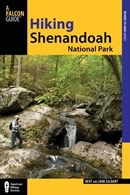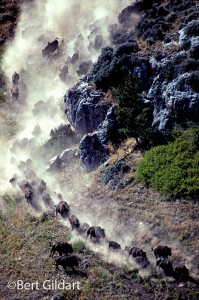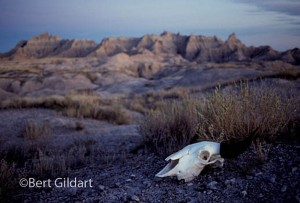The Parasitic Cowbird
©Bert Gildart: Though not as beautiful as are many of the other species now attracted by our feeders, nevertheless, the bland-appearing cowbird is a species of great fascination, essentially because of a habit it developed from a long ago association with a most formidable mammal.
BUT FIRST THE HABIT:
Cowbirds do not build nests, rather they parasitize the nests of others, and prolonged studies reveal cowbirds will lay eggs in the nests of at least 220 unsuspecting species. Further studies show that over 140 species of surrogate “parents” have raised young cowbirds.
So how did cowbirds pull off a trick like this? They accomplished the feat long ago learning from an association with the countless number of bison that pounded across the prairie. In those long ago times bison made annual peregrinations across the Great Plains of North America, and those herds numbered in the millions. As they migrated they stirred up insects and these bugs became an easy food source for any species that chanced to be in the area.
Parasitic cowbird, whose habits
acquired from association with herds of bison
COWBIRDS MOVED WITH THE BISON
Cowbirds were present, but a problem existed for bison didn’t stay long in the same area. Rather, they moved, and when they did move, cowbirds lost access to their easy food source. The solution? To eat, cowbirds had to move with the bison but that meant they couldn’t build nests. Further, that meant that any eggs they did lay would be abandoned.
The solution was to parasitize the nests of other birds, leaving incubation and the feeding of young to all the hawks, finches, robins, warblers, and crossbills — birds who relied on other foods. Certainly not all these other species adopted the mottled eggs that cowbirds laid, but most were oblivious, meaning that populations of cowbirds thrived.
Today, cowbirds still eat easy-to-gather insects because cattle stir the bugs just like bison did a century ago. And, so, today, even though the vast herds have been killed off, cowbirds continued with the parasitic trait they learned so many years ago.
Bison, insects and cowbirds all go together. Once millions of bison
stampeded across the prairies, and thankfully,
we still have a few remnant herds. Bison skull, Badlands, N. Dakota is symbolic of vanquished herds.
BISON & BIRD:
Fascinating, and I thought the information so exciting that I wanted to pass it on. Of course, I would not have been able to offer this information if a cowbird had not landed on my feeder, prompting me to grab for my field guide and confirm identification. But then I noticed that the guide offered an extensive discussion about the relationship with bison and bird, which I believed interesting.
Hope you do too.
————————-
THIS TIME NINE YEARS AGO:
4th ed. Autographed by the Authors
Hiking Shenandoah National Park
 Hiking Shenandoah National Park is the 4th edition of a favorite guide book, created by Bert & Janie, a professional husband-wife journalism team. Lots of updates including more waterfall trails, updated descriptions of confusing trail junctions, and new color photographs. New text describes more of the park’s compelling natural history. Often the descriptions are personal as the Gildarts have hiked virtually every single park trail, sometimes repeatedly.
Hiking Shenandoah National Park is the 4th edition of a favorite guide book, created by Bert & Janie, a professional husband-wife journalism team. Lots of updates including more waterfall trails, updated descriptions of confusing trail junctions, and new color photographs. New text describes more of the park’s compelling natural history. Often the descriptions are personal as the Gildarts have hiked virtually every single park trail, sometimes repeatedly.
Big Sky Country is beautiful
Montana Icons: 50 Classic Symbols of the Treasure State
![]() Montana Icons is a book for lovers of the western vista. Features photographs of fifty famous landmarks from what many call the “Last Best Place.” The book will make you feel homesick for Montana even if you already live here. Bert Gildart’s varied careers in Montana (Bus driver on an Indian reservation, a teacher, backcountry ranger, as well as a newspaper reporter, and photographer) have given him a special view of Montana, which he shares in this book. Share the view; click here.
Montana Icons is a book for lovers of the western vista. Features photographs of fifty famous landmarks from what many call the “Last Best Place.” The book will make you feel homesick for Montana even if you already live here. Bert Gildart’s varied careers in Montana (Bus driver on an Indian reservation, a teacher, backcountry ranger, as well as a newspaper reporter, and photographer) have given him a special view of Montana, which he shares in this book. Share the view; click here.
$16.95 + Autographed Copy
What makes Glacier, Glacier?
Glacier Icons: 50 Classic Views of the Crown of the Continent
![]() Glacier Icons: What makes Glacier Park so special? In this book you can discover the story behind fifty of this park’s most amazing features. With this entertaining collection of photos, anecdotes and little known facts, Bert Gildart will be your backcountry guide. A former Glacier backcountry ranger turned writer/photographer, his hundreds of stories and images have appeared in literally dozens of periodicals including Time/Life, Smithsonian, and Field & Stream. Take a look at Glacier Icons
Glacier Icons: What makes Glacier Park so special? In this book you can discover the story behind fifty of this park’s most amazing features. With this entertaining collection of photos, anecdotes and little known facts, Bert Gildart will be your backcountry guide. A former Glacier backcountry ranger turned writer/photographer, his hundreds of stories and images have appeared in literally dozens of periodicals including Time/Life, Smithsonian, and Field & Stream. Take a look at Glacier Icons
$16.95 + Autographed Copy




